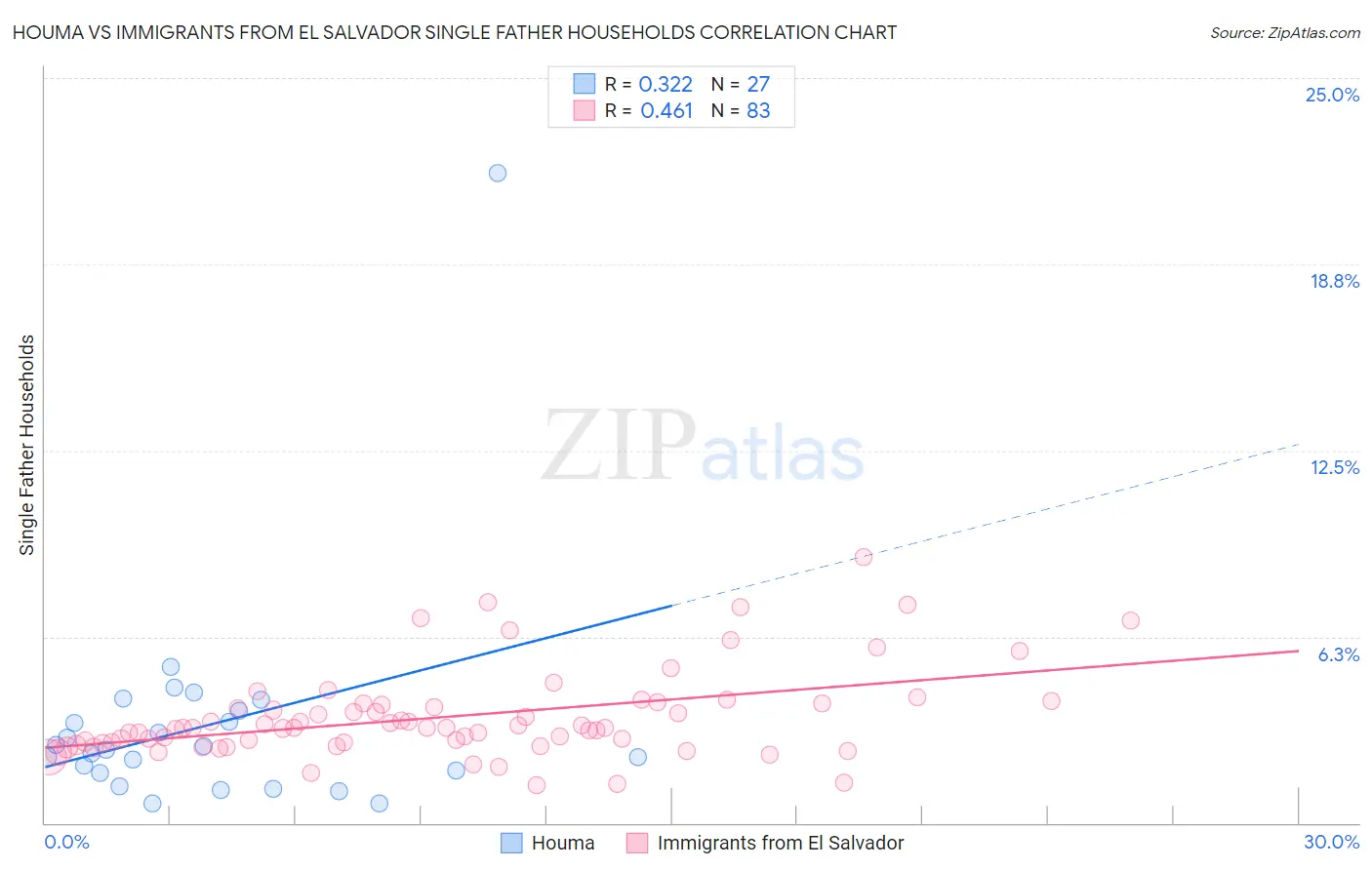Houma vs Immigrants from El Salvador Single Father Households
COMPARE
Houma
Immigrants from El Salvador
Single Father Households
Single Father Households Comparison
Houma
Immigrants from El Salvador
2.9%
SINGLE FATHER HOUSEHOLDS
0.0/ 100
METRIC RATING
316th/ 347
METRIC RANK
2.9%
SINGLE FATHER HOUSEHOLDS
0.0/ 100
METRIC RATING
317th/ 347
METRIC RANK
Houma vs Immigrants from El Salvador Single Father Households Correlation Chart
The statistical analysis conducted on geographies consisting of 36,727,905 people shows a mild positive correlation between the proportion of Houma and percentage of single father households in the United States with a correlation coefficient (R) of 0.322 and weighted average of 2.9%. Similarly, the statistical analysis conducted on geographies consisting of 355,655,401 people shows a moderate positive correlation between the proportion of Immigrants from El Salvador and percentage of single father households in the United States with a correlation coefficient (R) of 0.461 and weighted average of 2.9%, a difference of 0.86%.

Single Father Households Correlation Summary
| Measurement | Houma | Immigrants from El Salvador |
| Minimum | 0.65% | 1.3% |
| Maximum | 21.8% | 8.9% |
| Range | 21.2% | 7.6% |
| Mean | 3.3% | 3.6% |
| Median | 2.5% | 3.2% |
| Interquartile 25% (IQ1) | 1.7% | 2.7% |
| Interquartile 75% (IQ3) | 3.8% | 4.0% |
| Interquartile Range (IQR) | 2.1% | 1.3% |
| Standard Deviation (Sample) | 3.9% | 1.5% |
| Standard Deviation (Population) | 3.8% | 1.5% |
Demographics Similar to Houma and Immigrants from El Salvador by Single Father Households
In terms of single father households, the demographic groups most similar to Houma are Cheyenne (2.9%, a difference of 0.0%), Salvadoran (2.9%, a difference of 0.39%), Arapaho (2.9%, a difference of 0.64%), Cape Verdean (2.9%, a difference of 0.87%), and Tsimshian (2.9%, a difference of 1.1%). Similarly, the demographic groups most similar to Immigrants from El Salvador are Cape Verdean (2.9%, a difference of 0.010%), Ute (3.0%, a difference of 0.54%), Guatemalan (3.0%, a difference of 0.62%), Cheyenne (2.9%, a difference of 0.86%), and Mexican (3.0%, a difference of 1.0%).
| Demographics | Rating | Rank | Single Father Households |
| Immigrants | Azores | 0.0 /100 | #306 | Tragic 2.8% |
| Hopi | 0.0 /100 | #307 | Tragic 2.8% |
| Apache | 0.0 /100 | #308 | Tragic 2.8% |
| Central Americans | 0.0 /100 | #309 | Tragic 2.9% |
| Immigrants | Laos | 0.0 /100 | #310 | Tragic 2.9% |
| Spanish American Indians | 0.0 /100 | #311 | Tragic 2.9% |
| Tsimshian | 0.0 /100 | #312 | Tragic 2.9% |
| Arapaho | 0.0 /100 | #313 | Tragic 2.9% |
| Salvadorans | 0.0 /100 | #314 | Tragic 2.9% |
| Cheyenne | 0.0 /100 | #315 | Tragic 2.9% |
| Houma | 0.0 /100 | #316 | Tragic 2.9% |
| Immigrants | El Salvador | 0.0 /100 | #317 | Tragic 2.9% |
| Cape Verdeans | 0.0 /100 | #318 | Tragic 2.9% |
| Ute | 0.0 /100 | #319 | Tragic 3.0% |
| Guatemalans | 0.0 /100 | #320 | Tragic 3.0% |
| Mexicans | 0.0 /100 | #321 | Tragic 3.0% |
| Immigrants | Guatemala | 0.0 /100 | #322 | Tragic 3.0% |
| Immigrants | Central America | 0.0 /100 | #323 | Tragic 3.0% |
| Fijians | 0.0 /100 | #324 | Tragic 3.0% |
| Immigrants | Mexico | 0.0 /100 | #325 | Tragic 3.0% |
| Aleuts | 0.0 /100 | #326 | Tragic 3.0% |